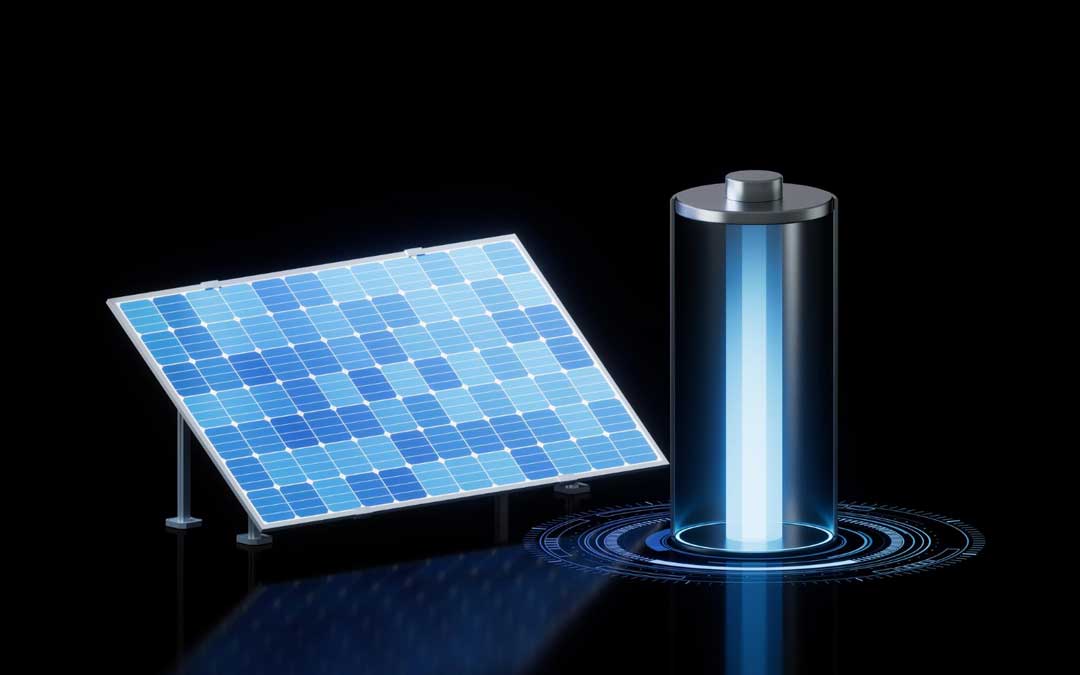With homeowners in Montana saving upwards of $39,000 on average with solar, it’s no wonder solar is growing from Billings to Missoula.
According to the Solar Energy Industries Association, there’s already enough solar in Montana to power 18,622 homes!
But how do homeowners in Montana know if they’re getting the most out of their investment towards energy independence with solar? It’s easy to find yourself overwhelmed when researching, there are a lot of things to consider.
One of the central questions is whether you should choose grid-tied solar with net metering, or try to go off-grid with a battery bank.
Keep reading to learn more about the differences between solar with net metering versus solar with a battery bank.
How Does Grid-Tied Solar Work with Net Metering?
Across Montana, homeowners are going solar with grid-tied systems. With a grid-tied solar system that is still connected to your local electricity grid, you’re able to pull energy without a battery back-up for when you need more energy than your system can produce.
But doesn’t that just mean you’re still using grid energy? Not exactly.
By using the process of net metering, when your system produces excess energy it’s sent back onto the grid. But you’re not just sending back free energy. For every kilowatt hour of energy you send back, you receive a credit on your account with the utility company.
During winter and spring storms, you’re able to cover any electricity you pull from the grid with those credits. Even when it can’t produce energy right then, your solar still helps to power your home.
You might say that net metering works sort of like an on-grid bank for solar by accumulating excess energy your panels produce the same way a battery bank would. Minus the maintenance.
Still curious why it’s called net metering? When you go solar, the utility company connects a second meter called the net meter to your home. That net meter tracks every kilowatt of extra energy you send back onto the grid, where it helps your community use cleaner energy too.
You get a credit via the net metering program protected by law in Montana. Then, when you need to, you can dip into those credits and pull the energy you sent back onto the grid to power your home.
But what about homeowners who live in the true backcountry of Montana, or who are just curious about one day being totally off-grid?
Pros and Cons of Investing in Solar Batteries
So if it’s so easy to go solar with net metering, why would any homeowner choose the additional investment required to install a battery bank? There are a few likely reasons.
If you’re planning on living totally off-grid, live in an area with regular and prolonged power outages, or live in a state that doesn’t offer net metering like Montana, then a battery bank might be the right fit for you. A battery bank can help you store your energy for access at home.
Batteries aren’t the only option for those homeowners, however. A home with solar that’s grid-tied and has a generator back up ready to go in case of emergencies can work for homeowners concerned about power outages as well.
Apart from folks who live truly off-grid, the majority of homeowners will get the most out of their solar investment with a grid-tied system given their energy needs and budget.
If you’re still curious about what to consider when investing in a solar battery bank, we have a few pointers:
- Be Realistic About the Cost: Many homeowners looking at a battery bank cite increased energy independence. But it’s important to know that the average cost of a battery bank is about $6,000. In general homeowners should expect to pay roughly half the cost of their solar energy system for a battery bank that can store the energy their home needs.
Right now, solar batteries also last between 5-15 years. Since the average solar panel lasts 25-30, you’re looking at replacing the entire battery bank at least once during the life of your solar energy system. It’s an added cost that is important to be aware of ahead of time so you can budget and put some of your solar savings towards paying for that replacement. - Are You Alright with More Maintenance: Depending on the type of battery bank you install, you should expect some degree of maintenance to ensure that your system is working correctly. While solar panels are very low maintenance, solar batteries vary from low maintenance to weekly checks.
For some battery types that maintenance can only be done by a certified tech, which means paying for that maintenance as well.
- Can You Even Live Off-Grid: Some homeowners might find that their desire for a battery bank in their home is thwarted by city and state laws. In some states, building and zoning codes mean that you can’t have a home fully disconnected from the grid that delivers electricity to your neighborhood.
Solar With Net Metering or a Battery Bank?
To recap, in Montana most homeowners have access to legally protected net metering for their home solar. Homeowners who are concerned about power outages have solar with a generator hook up as well as batteries as an option.
And make sure to check and see if your local laws affect how and if you can install solar batteries.
Ultimately, the most affordable choice for homeowners is grid-tied solar and net metering. With net metering you get the perk of having access to excess energy your panels produce without the added cost of a battery system.
The choice of whether or not to invest in a battery bank with your solar might depend most on whether you need one right now, or can wait.
Thankfully, the cost of solar batteries is falling, but right now batteries still add thousands onto going solar. If you can hold off for just a few years, solar batteries are expected to reduce by nearly 70% of their cost in the near future.
Between the high costs for solar batteries, the ongoing maintenance, and murky legalities, the average homeowner won’t see the full return on their investment into a solar battery bank right now.
Solar with Net Metering is The Way to Go!
Ready to gain your energy independence with solar? Purelight’s local experts can help you own your power and save!
Take advantage of Purelight’s zero down program and go solar for nothing out of pocket today.
See if your roof qualifies for our $0 out of pocket program!





